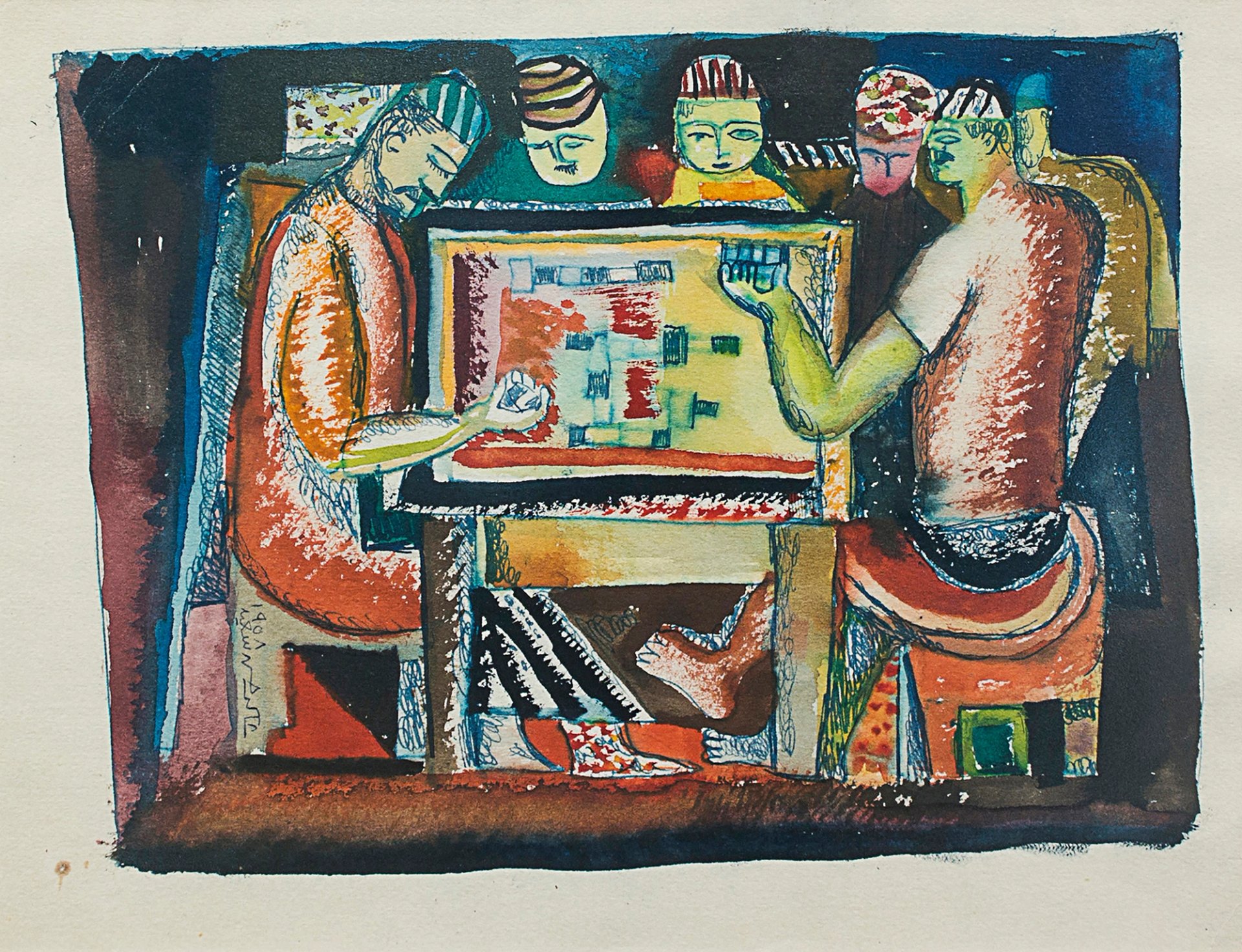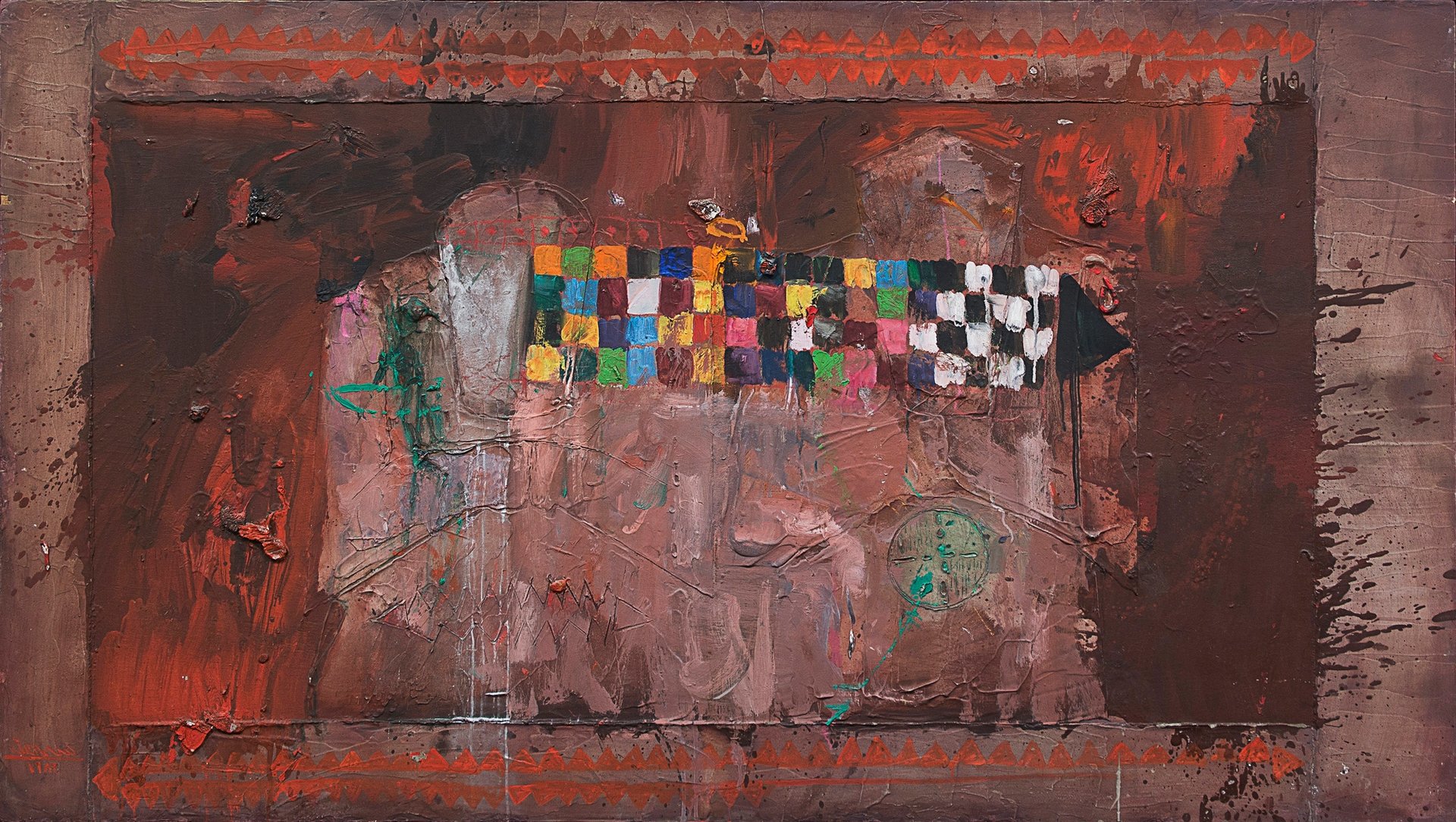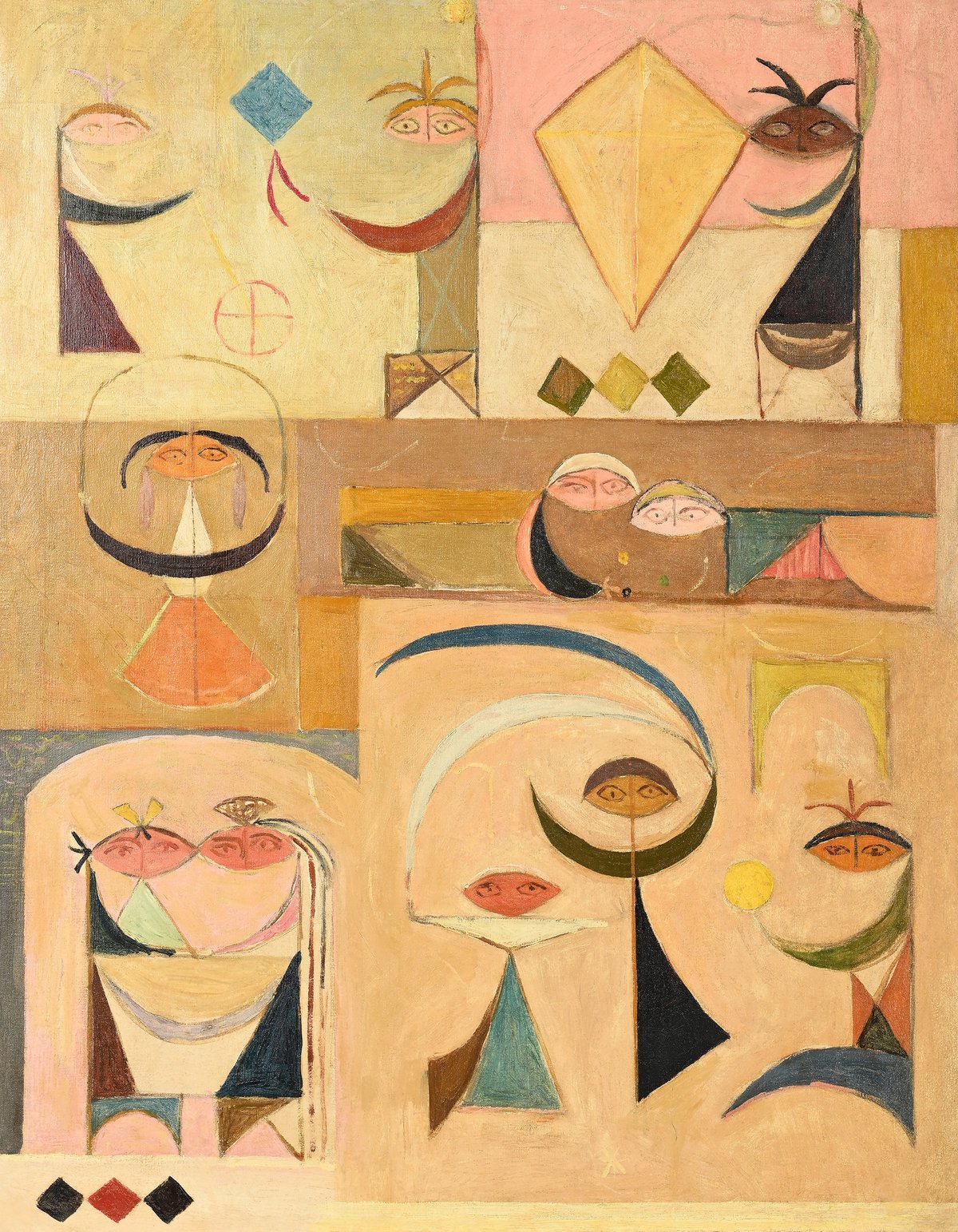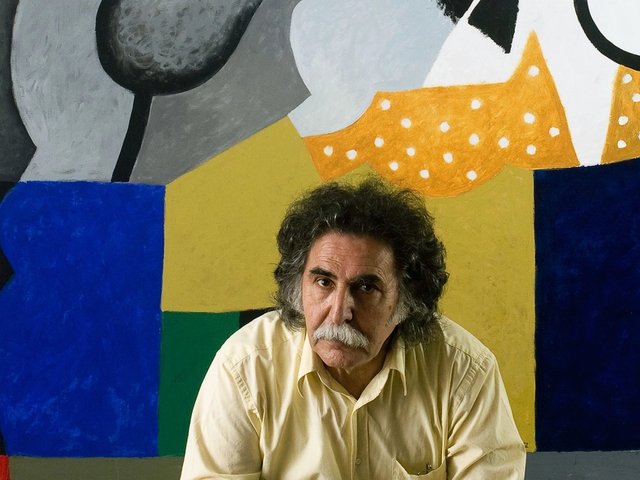A new exhibition at Bard College’s Hessel Museum of Art in New York State offers a unique perspective on Iraq’s post-colonial art. All Manner of Experiments: Legacies of the Baghdad Modern Art Group, organised by the specialists Nada Shabout and Tiffany Floyd together with the museum’s chief curator, Lauren Cornell, unites 64 works of painting, sculpture and drawings by 30 artists including Dia al-Azzawi and Mohammed Ghani Hikmat.
The works, ranging from 1951 to 2023, span Iraq’s hopeful mid-century moment—which gave birth to a new art movement celebrating both tradition and internationalism—through to the despair and isolation of the Iraq War period. Many of the pieces have not been displayed in decades. With an emphasis on student-teacher relationships, the exhibition testifies to the Baghdad Modern Art Group’s enduring influence on Iraqi and Arab artists today.
The curators have drawn works from private collections as well as eminent Arab collections including the Barjeel Art Foundation in Sharjah; the Dalloul Art Foundation in Beirut; the Ibrahimi Collection in Amman and Baghdad; and Qatar Museums. The gathering represents both a living history of Iraqi Modernism and a tribute to the heritage in Baghdad’s museums that was looted or destroyed during the Iraq War.

Shakir Hassan Al Said's The Café (1958) Ibrahimi Collection, Baghdad, Amman
“We can’t quantify the loss exactly,” Shabout says, because of incomplete archival records. But the conservative estimate is that “at least 85% of the 8,000 works of 20th-century art that belonged to the old Saddam Arts Centre have been stolen or damaged,” she says.
Though Western perceptions of Iraqi heritage at risk tend towards ancient sites, the 2003 invasion ushered in a wave of thefts of Modern and contemporary art. The Bard exhibition is not only significant as the first in-depth survey of the Baghdad Modern Art Group—founded in 1951 by the artist Jewad Selim and his former student Shakir Hassan Al Said—but also because of the curatorial efforts made to represent the absence of looted works. Their memory will be evoked through prints, posters, films, catalogues and other ephemera that will also help to contextualise Iraq’s post-colonial experience.
The Baghdad Group united artists under a shared commitment to Istilham al turath, seeking inspiration from heritage, through which they fused the abstract language of Western Modernism with Islamic and Mesopotamian aesthetics. Rather than any rigid methodology, it was about “a flow of people and ideas held together by a common impetus toward material innovation and aesthetic exploration”, the curators say.
Inspired by the 13th-century Baghdad School and the work of calligraphers and illustrators such as Yahya al-Wasiti, the Baghdad Group believed that the Mongol invasion of 1258 disrupted the lineage of pictorial Iraqi art and they wanted to recover lost traditions.

Hanaa Malallah's The Two Worshippers (1989) Ibrahimi Collection, Baghdad, Amman
The exhibition at Bard is in turn an attempt to recover some of Iraq’s contemporary traditions. While artists in many post-colonial nations have transformed heritage into contemporary idioms, Selim and his collaborators “canonised it into a specific process”, Shabout says.
The exhibition navigates the journey of Istilham al turath through Iraq’s 1958 revolution, ensuing social and political upheaval, the rise of pan-Arabism, and the emergence of new cultural institutions and movements. It also looks at the Baghdad Group’s legacy, from inspiring the New Vision Group (1969-72), formed by Dia Azzawi, to its influence on contemporary artists like Hanaa Malallah, who studied under Shakir Hassan Al Said but left Iraq in 2006.
This exhibition and its catalogue aim to be a beacon of hope for a new generation of contemporary Iraqi artists who have been deprived of access to much of their own Modernist heritage.
• All Manner of Experiments: Legacies of the Baghdad Modern Art Group, Hessel Museum of Art, Bard College, Annandale-on-Hudson, 21 June-19 October





